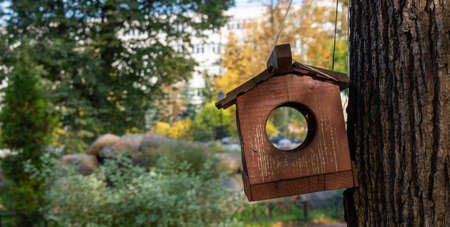Understanding Your Pet Bird’s Needs
Before you can create a truly stimulating environment for your feathered companion, it’s essential to gain a clear understanding of their unique needs. In the UK, popular pet birds such as budgerigars, cockatiels, lovebirds, and African greys each come with their own set of natural behaviours and instincts. These birds are highly intelligent and social creatures, thriving in environments that echo the diversity and complexity of their native habitats.
Many UK homes may not immediately replicate the open skies or lush canopies these birds would naturally enjoy, but there are plenty of ways to bridge this gap by recognising species-specific quirks. For example, budgies are known for their playful nature and need for regular social interaction, while African greys require mental challenges and opportunities to solve problems. Understanding your bird’s instinctual drives—such as foraging, climbing, flying, and vocalising—will help you provide meaningful enrichment.
It’s also important to remember that birds have keen senses: they notice subtle changes in light, sound, and even household routines. By observing your pet’s behaviour closely, you’ll begin to identify what stimulates their curiosity or causes stress. This knowledge forms the foundation for building a living space where your bird feels both safe and entertained—a key step towards ensuring their long-term health and happiness in a typical British home.
Choosing the Right Cage and Placement
Creating an engaging home environment for your pet bird in the UK starts with selecting an appropriate cage and considering its placement. A well-chosen cage not only ensures your bird’s safety but also contributes greatly to their mental stimulation and well-being.
Cage Size for Popular UK Bird Species
Different bird species have unique needs when it comes to space. It’s vital to select a cage that allows your feathered companion to stretch, flap their wings, and play comfortably. Use the table below as a guide:
| Bird Species | Minimum Cage Size (cm) | Recommended Bar Spacing |
|---|---|---|
| Budgerigar (Budgie) | 60 x 40 x 50 | 1.0 – 1.2 cm |
| Cockatiel | 80 x 50 x 80 | 1.2 – 1.5 cm |
| Canary/Finch | 60 x 40 x 40 | 0.8 – 1.0 cm |
| African Grey Parrot | 90 x 60 x 120 | 1.5 – 2.0 cm |
| Lovebird | 70 x 45 x 60 | 1.0 – 1.5 cm |
Safe Materials for UK Homes
The safety of cage materials is paramount. In British homes, avoid cages with paint or coatings containing lead or zinc, as these can be toxic to birds. Opt for powder-coated steel or stainless steel cages, which are durable and easy to clean. Wooden perches made from untreated British hardwoods such as apple or hazel are ideal for foot health and safe chewing.
Ideal Cage Placement in British Houses
The location of your bird’s cage significantly affects their happiness and interaction with the household:
- Naturally Lit Areas: Place the cage in a room with plenty of natural daylight but out of direct draughts or harsh midday sun, which can overheat birds even in cooler UK climates.
- Avoid Kitchens: Steer clear of placing cages in kitchens, as fumes from non-stick cookware (common in many British homes) can be fatal.
- Social Spaces: Living rooms or family areas work best, as they allow birds to observe and interact with daily activities without being overwhelmed by noise.
- Safety First: Ensure the cage is away from windows where cats may lurk outside, or where sudden chills could be a risk during typical UK weather changes.
- Height Matters: Birds feel more secure when their cage is positioned at or just above eye level, allowing them to observe without feeling threatened.
Your Next Step: Setting up for Success
Selecting the right cage and thoughtful placement within your British home creates a secure foundation for your pet bird’s enrichment and social integration, paving the way for further enhancements in their daily environment.

3. Enrichment Through Toys and Foraging
Providing your pet bird with a stimulating environment goes beyond just a spacious cage—it means keeping their clever minds active every day. In the UK, you can find a wide range of enrichment toys specifically designed for pet birds in local pet shops or online retailers such as Pets at Home and Northern Parrots. Popular choices include colourful swings, ladders, chewable wooden blocks, ropes, and puzzle feeders. These toys are not just for fun; they cater to your bird’s natural curiosity and need for mental stimulation.
DIY Enrichment Ideas Using Household Items
If you’re looking to add variety without breaking the bank, many safe household items can be turned into engaging toys. Try weaving strips of plain paper or clean cardboard through the bars of the cage, or stringing together paper straws to create a homemade ladder. You might even repurpose an empty kitchen roll tube as a tunnel or hiding spot. Just ensure all materials are non-toxic and free from adhesives or inks that could be harmful if chewed.
The Importance of Foraging Activities
Foraging is a vital activity for birds in the wild, and replicating this behaviour at home is key to their happiness and health. Hide treats like millet sprays or small pieces of fruit inside bird-safe boxes or among shredded paper to encourage your pet to search and problem-solve. Puzzle feeders, which are readily available in UK stores, also make mealtimes more engaging by requiring your bird to work out how to access their food. Regularly rotating toys and changing up foraging challenges prevents boredom and helps to mimic the ever-changing environment birds would experience in nature.
Final Tips
Remember, always supervise your bird with new toys or DIY creations until you’re confident they’re safe. By thoughtfully combining shop-bought toys, creative homemade solutions, and regular foraging opportunities, you’ll keep your feathered friend entertained, healthy, and thriving right here in your UK home.
4. Integrating Natural Elements Safely
Introducing natural elements into your pet bird’s environment is a fantastic way to mimic their wild habitat and keep them mentally and physically stimulated. However, in the UK, it’s crucial to ensure all items are safe, pesticide-free, and suitable for avian use. Let’s explore how to source these elements responsibly and make the most of them in your home.
Sourcing Safe British Branches and Leaves
When choosing branches or leaves, always select native British trees that are known to be bird-safe. Avoid branches from roadsides or areas where pesticides may have been used. Instead, opt for those from trusted gardens, local parks (with permission), or specialist suppliers who guarantee chemical-free wood.
| Tree Type | Safe For Birds? | Common UK Locations | Notes |
|---|---|---|---|
| Apple | Yes | Orchards, Gardens | Avoid treated wood |
| Willow | Yes | Parks, Riversides | Great for chewing |
| Birch | Yes | Woodlands, Parks | Thin branches preferred |
| Oak | No* | Countryside, Forests | *Acorns and leaves are toxic; avoid entirely |
| Eucalyptus (ornamental) | Yes (in moderation) | Gardens, Nurseries | Aromatic; use sparingly |
Cleansing and Preparing Natural Perches
Before introducing any natural material into your bird’s cage or play area:
- Clean thoroughly: Scrub off any dirt with hot water; avoid detergents.
- Bake or boil: Place branches in an oven at 160°C for 30 minutes or boil for 10 minutes to kill pests.
- Inspect regularly: Remove any signs of mould, rot, or sharp edges.
- Avoid sap: Sticky sap can be harmful if ingested or stuck to feathers.
Rotating Natural Elements for Continuous Interest
Your birds will benefit from a regularly changing environment. By rotating branches, perches, and leaves every week or two, you stimulate curiosity and prevent boredom. Keep a small collection of clean, prepared materials ready to swap out old items before they become soiled or lose their novelty.
Rotation Schedule Example Table:
| Week | Main Perch Material | Toys/Branches Added |
|---|---|---|
| 1–2 | Bamboo perch + apple branch | Eucalyptus twigs, willow leaves bundle |
| 3–4 | Barkless birch branch perch | Sisal rope toy, fresh willow branch ring |
| 5–6 | Naturally shaped hazel stick perch | Pine cone cluster (untreated), grass heads bouquet (dried) |
This approach not only supports physical health through different textures and diameters but also enriches your birds’ daily experiences—helping them stay happy and engaged within your UK home environment.
5. Establishing a Routine: Out-of-Cage Time and Social Interaction
Pet birds thrive on social interaction and benefit greatly from regular out-of-cage time, especially in the varied environments found in UK homes. Establishing a clear routine helps your feathered friend feel secure and engaged, while also encouraging healthy relationships with household members.
Tips for Safe Supervised Out-of-Cage Time
To ensure your bird’s safety, always prepare the room before letting them out. Close all windows and doors, cover mirrors, and remove any potential hazards such as open water containers or electrical wires. It’s best to create a ‘bird-safe’ area where your pet can stretch their wings without risk. If you have other pets, make sure they are kept in another room during this time. In typical British homes, consider using a conservatory or lounge as a supervised play area—these spaces often offer natural light and enough space for gentle flight or hopping about.
Building Positive Social Experiences
Birds are highly social creatures, particularly species like budgerigars, cockatiels, and African greys that are popular across the UK. Encourage family members to interact gently with your bird by offering treats, speaking softly, and using toys for shared play. Make sure everyone understands how to handle birds safely—remind children to move slowly and avoid sudden noises. Regular daily sessions outside the cage help prevent boredom and behavioural issues, supporting both mental stimulation and emotional health.
Supporting Routine Through Consistency
Establish fixed times each day for out-of-cage activities. Birds respond well to predictability—consider linking these periods with household routines such as after school or teatime. This structure not only helps your bird anticipate enjoyable interactions but also makes it easier for everyone in the home to participate in their care.
By prioritising supervised freedom and positive social experiences within your UK home, you’ll be fostering a stimulating environment that supports both the wellbeing and happiness of your pet bird.
6. Cultural Considerations and Seasonal Adjustments
When creating a stimulating environment for pet birds in UK homes, it is important to take local culture and seasonal variations into account. The UK’s unique weather patterns, daylight cycles, and festive traditions all play a role in how you can best care for your feathered companions.
Adapting to British Weather and Daylight
The UK is known for its variable climate, ranging from grey, drizzly days to bright summer afternoons. Birds are sensitive to light, so be mindful of shorter daylight hours during autumn and winter. Using full-spectrum avian lamps can help mimic natural sunlight, supporting your bird’s health and mood when natural light is limited. In warmer months, safely allow your bird supervised access to open windows or secure outdoor aviaries, ensuring they enjoy the fresh air and natural sounds without exposure to draughts or predators.
Embracing British Festivities
British households often celebrate occasions such as Christmas, Bonfire Night, Easter, and the Queen’s Birthday. These festivities can be both exciting and stressful for pet birds due to increased noise, guests, and decorations. During these times, provide a safe retreat where your bird can feel calm. Include familiar toys and cover their cage partially if needed to reduce stress from fireworks or busy environments. You might also introduce themed enrichment items—like festive-coloured toys—while always prioritising safety.
Integrating Local Habits
UK homes tend to be smaller and more insulated compared to some other countries. This means ventilation must be balanced with temperature control. Avoid placing cages near radiators or draughty windows; instead, opt for spots with consistent temperature and indirect natural light. British pet owners often enjoy spending time in conservatories or garden rooms; these can become excellent spaces for supervised bird playtime when properly secured.
Seasonal Enrichment Ideas
In spring and summer, rotate fresh branches from safe native trees (such as apple or willow) into your bird’s environment for natural chewing and climbing opportunities. In colder months, focus on indoor activities: puzzle feeders filled with UK-grown treats like peas or carrots provide mental stimulation while reflecting local produce. Rotate toys more frequently during rainy periods when outdoor time is limited.
By understanding the rhythms of British life—both cultural and environmental—you’ll create a more engaging and comfortable home for your pet bird all year round.
7. Monitoring Wellbeing and Behavioural Signs
Creating a stimulating environment for your pet bird is just the beginning—maintaining their wellbeing requires regular observation and responsiveness to their needs. Birds in UK homes may exhibit subtle signs when something isnt right, so its essential to be vigilant and proactive.
Tracking Emotional and Physical Health
Establish a daily routine to check on your bird’s appearance and behaviour. Healthy birds are alert, have bright eyes, smooth feathers, and interact with their surroundings. Keep an eye on weight, appetite, droppings, and activity levels as any sudden changes can indicate underlying issues. Use a simple log or app to record these observations, which will help you spot patterns or concerns early on.
Recognising Signs of Boredom or Stress
Boredom or stress can manifest in repetitive behaviours like feather plucking, excessive vocalisation, pacing, or loss of interest in toys. Birds may also become withdrawn or aggressive if they’re not receiving enough mental stimulation. In the context of UK homes, environmental factors such as central heating, limited daylight during winter months, or lack of social interaction can exacerbate these issues. Regularly rotate toys and rearrange perches to keep things fresh and engaging for your bird.
When to Consult a UK Avian Vet
If you notice persistent changes in your bird’s behaviour or physical condition—such as lethargy, fluffed-up feathers for extended periods, breathing difficulties, or unexplained aggression—it’s time to consult an avian vet. The UK has many qualified avian specialists familiar with local conditions and regulations. Don’t hesitate to seek professional advice; early intervention is key to ensuring your bird’s long-term health and happiness.
By monitoring your pet bird’s wellbeing closely and responding promptly to changes, you’ll foster a healthy, happy companion who thrives in your UK home.


